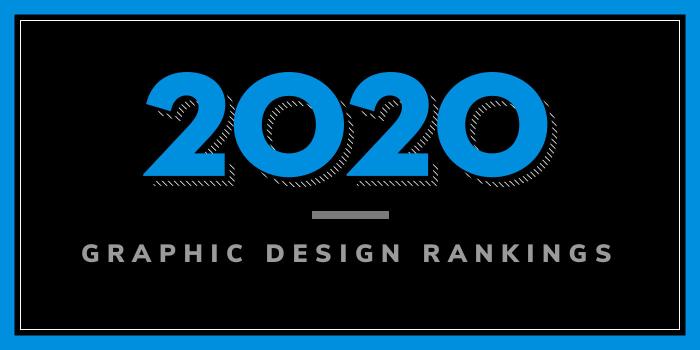
What are the top private graphic design schools in the U.S. for 2020?
| Ranking | School | State | Top % |
|---|---|---|---|
| 1 | Yale University | Connecticut | 1% |
| 2 | Rhode Island School of Design | Rhode Island | 1% |
| 3 | Pratt Institute | New York | 1% |
| 4 | Maryland Institute College of Art | Maryland | 1% |
| 5 | The New School’s Parsons School of Design | New York | 2% |
| 6 | School of Visual Arts | New York | 2% |
| 7 | ArtCenter College of Design | California | 2% |
| 8 | School of the Art Institute of Chicago | Illinois | 2% |
| 9 | Savannah College of Art and Design | Georgia | 3% |
| 10 | California College of the Arts | California | 3% |
| 11 | California Institute of the Arts | California | 3% |
| 12 | Carnegie Mellon University | Pennsylvania | 3% |
| 13 | Otis College of Art and Design | California | 4% |
| 14 | Ringling College of Art and Design | Florida | 4% |
| 15 | Cooper Union | New York | 4% |
| 16 | Minneapolis College of Art and Design | Minnesota | 4% |
| 17 | Columbia College Chicago | Illinois | 5% |
| 18 | Washington University in St. Louis | Missouri | 5% |
| 19 | University of Southern California | California | 5% |
| 20 | Rochester Institute of Technology | New York | 5% |
| 21 | Brigham Young University | Utah | 5% |
| 22 | Boston University | Massachusetts | 6% |
| 23 | Temple University | Pennsylvania | 6% |
| 24 | Laguna College of Art and Design | California | 6% |
| 25 | Northeastern University | Massachusetts | 6% |
Our 2020 list of the Top 25 Private Graphic Design School Programs in the US. We considered over 400 private colleges with graphic design programs for this year's rankings. For an explanation of ranking criteria, click here.

Founded in 1701, Yale University serves more than 12,300 students enrolled in dozens of programs in the areas of art, architecture, divinity, drama, forestry and environmental studies, law, management, music, public health, and more. The school, which houses more than 145 departments and schools, is home to one of the most prestigious fine arts schools in the U.S.
Established in 1869, Yale School Art was the nation’s first art school connected with an institution of higher learning. With an enrollment of more than 100 students, the school offers a BA in Art and MFA degrees in Graphic Design, Painting and Printmaking, Photography, and Sculpture. An interdisciplinary Film & Video program is also available.
The BA in Art offers the opportunity for intensive study leading to greater specialization in one or more of the visual disciplines such as Graphic Design, Painting/Printmaking, Photography, and Sculpture. Course highlights include Introduction to Graphic Design, History of Graphic Design, Graphic Design Methodologies, Advanced Graphic Design: Series and Systems, Advanced Graphic Design: History, Editing, and Interpretation, Typography: Expression, Structure, and Sequence, Printmaking, Visual Thinking, and Interactive Design and the Internet. Students in the program will complete a Senior Project Seminar that will allow them to showcase their designs.
The Yale Graphic Design MFA (Yale GDMFA) is a competitive, 60 credit hour program that accepts just 12 students each year and up to six students into the preliminary-year program. MFA applicants are expected to have “substantial and distinguished experience in visual studies and related professional experience,” says the school. Students can expect support for their graphic design collections in several ways including, “studio work led by faculty meeting weekly, small five- or six-person thesis groups meeting biweekly, and individual sessions with writing and editing tutors.”
Lectures, presentations, and workshops are also part of the program as well as access to “extraordinary” resources including Yale University courses, conferences, films, lectures, museums, and the “extensive” research and rare book collections of Sterling and Beinecke libraries. Students also have a designated workspace in the design studio loft and access to equipment including bookbinding materials, wide format printers, a RISO duplicator, Vandercook press, and workspaces in the School of Art buildings. More resources supporting interdisciplinary projects including motion capture and VR are available at the nearby Center for Collaborative Arts and Media. The Yale Graphic Design MFA takes two years to complete, full-time.

Founded in 1877, Rhode Island School of Design (RISD) is one of the first art and design schools in the U.S. Serving approximately 2,500 students from across the U.S. and 57 other countries, the school has 19 studio majors and leading to bachelor’s or master’s degrees in the Fine Arts, Architecture, Design or Art Education. The school’s most popular programs are Graphic Design, Film/Animation/Video (FAV), Illustration, Painting, and Industrial Design. Aspiring graphic designers have two options: the four-year undergraduate BFA and the graduate MFA with two tracks.
One of the largest departments at RISD, the school says Graphic Design offers “countless opportunities to collaborate within and beyond the discipline,” thanks to access to more than 160 undergraduate majors. Course highlights include Spatial Dynamics, Color + Surface, and Design Studio. The program culminates in a “challenging, self-defined degree project that taps into each student's strengths, interests and experiences,” says the school.
The MFA programs offer the same opportunities as the BFA does, as well as two tracks: a two-year option designed for students entering with undergraduate degrees in graphic design or other visual communication, and a three-year option designed for students with degrees in liberal arts, the sciences or fine arts. Built on a sequence of required courses, the curricula for both tracks allow candidates to tailor individual courses of study through cross-disciplinary electives.
An impressive 96% of all RISD graphic design graduates are employed one year after graduation, and 70% are employed in positions directly related to their major.

Founded in 1887, Pratt Institute serves more than 4,800 students enrolled in more than 25 undergraduate degree programs and concentrations and more than 26 graduate degree programs in its Schools of Art, Design, Architecture, Liberal Arts and Sciences, and Information. Founded in 2014, The School of Design offers “up to four of Pratt’s oldest and most esteemed disciplines,” says the school, including Communications Design, Fashion Design, Industrial Design, and Interior Design.
The Communications Design program is the “only program in the country that recognizes and embodies the convergence and integration of Illustration, Advertising, and Graphic Design as the primary forces for the visual expression of ideas.” Students may concentrate in any of three areas (Illustration, Advertising Art Direction or Graphic Design). The undergraduate program for aspiring graphic designers leads to a BFA in Communications Design with a Graphic Design Emphasis.
The School of Design also houses the Graduate Communications Design Department, which offers an MFA in Communications Design and an MS in Package Design. The full-time Communications Design MFA emphasizes full-time studio practice in graphic design—communications, identities, objects, environments, and systems. Graduates are prepared to enter careers in print and digital media, typography, identity systems and branding, design strategy, social media and interaction design, motion design, environmental design, data visualization, information design, and user experience design.
First offered in 1966, the MS in Package Design is an initial master’s degree that offers students structured courses on the decision-making process for new product and package development, featuring direction in package design, typography, brand development, marketing, structural packaging, packaging technology, fragrance packaging, and the business aspects of the package industry. This is a full-time program, which culminates in a capstone thesis project.
For students who are not yet ready to commit to a degree program, the School of Continuing and Professional Studies (SCPS) offers Certificate Programs in Digital Design including Graphic Design, Digital Design, Branding and Digital Marketing and many others. These programs may be taken individually or “stacked,” producing an “accelerated path to completion,” says the school. Like the undergraduate and graduate Communication Design programs, Certificate programs offer the opportunity to complete an internship.
Students in all programs will have the opportunity to enroll in one of more than 20 study abroad programs and international exchange programs in over a dozen locations such as Florence, Milan, Copenhagen, London, and Tokyo.
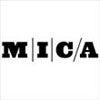
Founded in 1826, Maryland Institute College of Art (MICA) is the oldest independent, continuously degree-granting college of art and design in the U.S. The College enrolls nearly 3,500 undergraduate, graduate and open studies students from 49 states and 52 countries. Around 80 programs leading to the BFA, MA, MFA, and MPS degrees are available in the areas of fine arts, design, electronic media, art education, liberal arts, and professional studies. Post-baccalaureate certificate programs are also offered.
Programs for aspiring graphic designers include a BFA in Graphic Design with three Concentrations including Graphic Design Studio, Book Arts Studio, and Graphic Design + Humanistic Studies, an MA in Graphic Design (GDMA) and an MFA in Graphic Design (GD MFA).
The undergraduate graphic design curriculum at MICA features a three-year sequence of core design courses, while the 60-credit MFA program features two years of full-time study that the school says combines “critical seminars, guided studio courses, and independent work.” Students in the MFA program may choose a concentration in Critical Studies or Curatorial Practices or “take advantage of electives in many MICA departments, including video, printmaking, and digital media.”
The MA program prepares students for advancing their careers and/or for applying to the competitive MFA. Program highlights include an “intensive introduction to design,” provided by the GDMA Studio, “taught with a strong emphasis on design fundamentals, process, visual research, and working across media,” a Design Theory and Practice Seminar, and the GDMA Workshop. Through the workshop, GDMA students will have the opportunity to create and exhibit a self-directed design project and a professional portfolio.

The New School was founded in 1896 by American Impressionist William Merritt Chase. Back then, the school was known as The Chase School, and later as New York School of Fine and Applied Art. Today, known as The New School's Parsons School of Design, this art and design college serves nearly 6,000 students enrolled in 130 degree and diploma programs across five schools including the School of Art and Design History and Theory, School of Art, Media and Technology, School of Constructed Environments, School of Design Strategies, and the School of Fashion.
The School of Art, Media, and Technology offers several degree programs for aspiring graphic designers including an AAS in Graphic Design, a BFA in Communication Design, and an MPS in Communication Design.
The school says that the AAS program provides a “solid foundation in the traditional practices and concepts of graphic design,” while the BFA covers typography and interaction. Sponsored projects are in the areas of publication, interaction design, branding, advertising, type design, information design, motion graphics, and environmental design.
The one-year, 30 credit hour MPS program offers a concentration in Digital Product Design. Per the school, the program “combines instruction in advanced interaction design with coursework that develops your user-experience, design-thinking, and collaboration abilities.” Students will graduate with “industry-ready conceptual and front-end development skills and a network of design professionals to help” them “advance in or enter a rapidly growing field.” Career opportunities include Interaction Design (IxD), User Experience (UX) Design, Digital Product Design, and Product Management, to name a few.
Parsons also offers a Graphic and Digital Design Certificate through its continuing education department. The program, which consists of six courses, can be completed online or through a combination of online and on-campus courses.

Founded in 1947 as “Cartoonists and Illustrators School,” School of Visual Arts (SVA) serves more than 3,700 students enrolled in over 30 programs in areas ranging from fine arts and graphic design to filmmaking and photography. The programs at SVA lead to the BFA, MFA, MA, MAT or MPS degree.
Offerings for aspiring graphic designers include a BFA in Design and a Design/Designer as Entrepreneur MFA. The BFA is a “multidisciplinary educational system in itself, offering separate majors that include Graphic Design, Motion Graphics and 3D Design,” says the school. The program can be divided into package design, editorial design, information graphics, corporate identity, publication design, CD packaging, book jacket design, environmental design and website design. Other program highlights include intensive one-week workshops, exhibitions that are routinely covered by NBC, CBS. ABC, and CNN, competitions, enrollment in the AIGA (American Institute of Graphic Artists) and the Art Directors Club—two of the most prestigious design organizations in the country, industry review, and internships.
The Design/Designer as Entrepreneur MFA “inspires” students to conceive, produce, brand and market their own innovative content. Interaction, motion graphics, branding, and user experience are covered as well as typography as a visual language, video and new media directing, and art book and digital publishing. Students will also take classes in business, marketing, ethnography, strategy, research, advertising, promotion, intellectual property and networking.
MFA students have access to SVA MFA studios, open 24 hours a day and “designed to simulate an operational design/media firm with spacious workstations that allow for individual and collaborative work.” In the studio, students will produce a prototype to pitch to investors, collaborators or distributors. This final product is presented in public at the school’s Venture Forum at the SVA Theatre and subsequently to the design community.
Graduates of the program have gone on to work for commercial and not-for-profit corporations, institutions and businesses. Many founded their own start-ups, design firms and studios. Some have become partners in businesses and individual projects. Graduates have started over 50 design studios around the globe.

Founded in 1930, ArtCenter College of Design serves approximately 2,250 students representing more than 40 countries. The school offers 11 undergraduate and seven graduate degree programs in a variety of Industrial Design, Visual, and Applied Arts Disciplines. A joint MS/MBA program with the Drucker-Ito School of Management is also available. The school, which has a campus in Berlin, two campuses in Pasadena, and satellite studios in Los Angeles at the Peterson Automotive Museum, offers a BFA in Graphic Design and an MFA Graduate Graphic Design (MGx).
Students might also consider interdisciplinary programs such as the Desginmatters Concentration, which leads to a Certificate in Art and Design for Social Impact or the Integrated Studies Program, which covers essential skills and competencies, critical thinking and the creative process, cultural literacy and contextual reference, interdisciplinary experience, and quality of execution and professional practices. Offered through the Graphic Design Department (GX), all programs offer internships and study abroad opportunities.
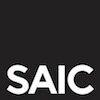
Founded in 1866, the School of the Art Institute of Chicago (SAIC) is one of the oldest accredited independent schools of art and design in the country. Serving nearly 3,700 students from 78 countries, SAIC offers more than 50 areas of study from Animation and Costume Design to Visual Communication Design and Writing. Programs for aspiring graphic designers are offered through the Visual Communication Design Department. Options include a BFA, MFA or Certificate in Graphic Design.
The BFA program has two major areas of focus including Physical Media (print, objects, and environments) and Virtual Media (interactive and time-based media). The MFA program offers the opportunity to explore other related departments at SAIC such as Printmedia, Writing, Photography, Architecture, Interior Architecture, and Designed Objects, and Film, Video, New Media, and Animation (FVNMA). The purpose of this opportunity is to “extend students’ design work into new territories,” says the school. The Graphic Design Certificate is designed for “students with an interest in exploring graphic design with an emphasis on print media.”
Other Graphic Design Program highlights include an active AIGA (American Institute of Graphic Arts) student chapter, Exploratory Languages (a lecture series featuring leading designers and design educators from across the country), and CIPB (Chicago International Poster Biennial), which is an international competition representing leading designers from throughout the world. Internship and optional study abroad opportunities are also available.
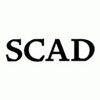
Savannah College of Art and Design (SCAD) was founded in 1978. With campuses in Savannah, Atlanta, Hong Kong, and Lacoste, France, the school serves more than 14,000 students from all 50 states and more than 100 countries. Offering more art degree programs and specializations than any other art and design university, SCAD has plenty of opportunities to study at domestic and international locations. The school also offers more graphic design programs than just about any other school on our list. Options include BA, BFA, MA, and MFA degrees in Graphic Design and a Design Management MA. A Minor in Graphic Design is also available.
All programs highlight Product Packaging, Entrepreneurship, Mobile Technology, Interface Design and User Experience. Students have the opportunity to declare a double major in the areas of Advertising, Branded Entertainment, Illustration, Motion Media Design, Sequential Art and more. Students also have access to Minors such as Mobile and Interactive Design, and Advertising Copywriting. Students may complement their degree with a Certificate in Digital Publishing .
The BA degree is offered in Atlanta, Savannah and online and the BFA, MA, MFA, and Minor programs are offered in Atlanta, Hong Kong, Savannah, and online. The Certificate program is offered in Atlanta, Savannah, and online.
SCAD graduates are prepared to join elite agencies, multinational companies, or start their own businesses as they lead branding, visual marketing, interactive media, and immersive campaigns. Graduates work at top companies around the globe including Apple, IBM, Ralph Lauren, Under Armour, Verizon, and many others.

Founded in 1907, California College of the Arts (CCA) serves around 1,900 students enrolled more than 30 degree programs. Undergraduate programs for aspiring graphic designers include BFA degrees in Graphic Design and Interaction Design and a BA in Visual Studies. Graduate options include an MFA in Design that focuses on Graphic Design, Industrial Design, and Interaction Design.
Highlights for all programs include the opportunity to immerse in the areas of Brand Identity, Print, Motion Graphics, and Screen-Based and Interactive Design, elective offerings that will “strengthen” students “design toolkit,” and the opportunity to gain real-world experience through CCA’s extensive internship program. Students have the opportunity to intern for design firms, publishing houses, and nonprofits as they work toward a polished thesis project.
“Situated within a top art college,” says the school, “the Graphic Design program also benefits from an atmosphere of hands-on making and experimentation. Students are constantly giving and getting feedback and testing their ideas with faculty, visiting experts, and peers.”
Graduates of the Graphic Design Programs at CCA have landed positions at innovative design firms, museums, publishing houses, technology companies, nonprofits, and more.

Walt and Roy Disney formed California Institute of the Arts (CalArts) in 1961 through the merger of two existing Los Angeles schools for art and music. The school became the nation's first postsecondary institution to offer graduate and undergraduate degrees in both the visual and performing arts. Just shy of a decade later, the new college, CalArts, opened its doors to offer programs in art, design, film, music, theater and dance.
Today, the school serves around 1,500 students enrolled in more than 70 undergraduate, graduate, and doctoral programs across six schools including the School of Critical Studies, The Sharon Disney Lund School of Dance, the School of Art, the School of Film/Video, The Herb Alpert School of Music at CalArts, and the School of Theater. The School of Art houses the Graphic Design Program, which leads to a BFA or MFA. A Digital Arts Minor and an Interschool Degree option are also available.
The school says that the Minor is “designed to help undergraduate students grasp the knowledge to build, engineer and design innovative custom systems.” The Interschool Degree Option is available to a small number of graduates and advanced third- and fourth-year undergraduates whose skills and artistic interests warrant pursuing a degree in more than one School.
The BFA program is a full-time, four-year program that prepares students for a career in print and publication design, web and interface design, motion graphics for broadcast and film, branding, identity and type design, and design history and education. Each year in the program “builds on the experience of the previous as a sequence of additional classes explore image-making, typography and design history. Baseline coursework is followed by more specialized classes in areas such as web design, motion graphics, and type design.” In addition to core studio classes, all candidates in the Program are required to pass a Graduation Portfolio Review in order to complete the program and obtain the BFA degree.
The MFA program offers two- and three-year options. During the two-year program, students deepen and refine their work through a set of required and elective courses covering subjects such as type design, web design, typography, motion graphics, design theory and design history. Students will also work with visiting designers on short-term projects within the focused studio environment.
“The three-year Program is designed for students who do not have a Graphic Design undergraduate degree, but who typically demonstrate a talent and enthusiasm for design, and a level of expertise in their given field. The heart of the Program is the Visual Literacy course, a critique class comprised of a series of structured projects designed to teach design principles, process, methodology and skills.” Students in both programs are required to pass a Thesis Review to obtain the MFA degree.

Founded in 1900, Carnegie Mellon University (CMU) serves more than 14,500 students representing over 100 countries. The school offers more than 100 programs across seven colleges, including the College of Fine Art, home of the School of Design. Here, aspiring graphic designers can earn a Bachelor of Design (BDes), formerly BFA. The program has three tracks: Products, Communications, and Environments. Students may focus in one or all three areas or pursue a more interdisciplinary focus that combines two of the three.
Other undergraduate options include the Minor in Design Application and the Undergraduate Interdisciplinary Degree known as “BXA,” which provides students with the ability to evenly balance their study of humanities or sciences with design. While BXA majors may take 26 design courses and 15 outside courses, most BXA students take 12 design courses, with the balance of their courses taken outside of the School of Design. The Minor is for students admitted to other programs on campus who are interested in gaining “fundamental design skills and/or exposure to design.”
“CMU also offers a unique program called Integrative Design, Arts, and Technology (IDeATe), which allows student to concentrate their studies on cross-campus industry themes like game design, animation and special effects, innovation and entrepreneurship, intelligent environments, and learning media design.”
Graduate options include a one-year Master of Arts (MA) in Design program, a one-year Master of Professional Studies (MPS) in Design for Interactions, a two-year Master of Design (MDes) in Design for Interactions program, and a PhD in Design Studies. Students in the graduate programs can expect to take courses such as Prototyping for Interaction Design, Studio: Visual Communication Fundamentals, Design Principles and Practices, and Seminar: Design Thinking. Students may complement their skills and knowledge with elective courses outside of design. Courses in policy, business, service or social innovation, interaction or communication design, or professional writing are recommended.

Otis College of Art and Design (OTIS) was established in 1918 by founder and publisher of the Los Angeles Times, General Harrison Gray Otis. The school serves approximately 1,100 full-time students enrolled in 11 BFA degree programs ranging from Graphic Design to Toy Design. The school also offers MFA degrees in Fine Arts, Graphic Design, Public Practice, and Writing, as well as a variety of minors and certificate programs.
The BFA in Graphic Design is offered through the Communication Arts Department as well as a Minor in Advertising Design and a Graphic Design Certificate. Formats covered in the BFA Graphic Design Program include branding and logo development, posters, books, package design, apps, websites, and interactive design. Students in the program “learn to articulate a critical and theoretical perspective and develop graphic design skills, such as type design and traditional letterpress,” says the school. “Strong craft and presentation skills are emphasized throughout,” with students achieving “the highest level of design excellence through critiques, reviews, and workshops.”
Course highlights for the program include Drawing and Building Form, Connections through Color and Design, History of Graphic Design, Illustration, and Advertising Design, Publication, Advanced Image Making Projects, Systems and Identity Design, and Type and Alternative Media. A Senior Thesis/Research Paper, Senior Project/Seminar, and Capstone are also part of the program.
The MFA in Graphic Design is an accelerated yearlong, “LA-based student, faculty and research collective of designers investigating the issues of our day.” During the program, students learn to work across media and platforms through a series of visiting workshops, courses in design theory and history, studio projects, and round table discussions. “The coursework engages research, discourse, critical thinking, and iterative process with the goal of discovering many possible design outcomes. In so doing, the program supports students in taking on the challenges and opportunities in contemporary graphic design practice.”
Graduates of the Graphic Design programs at OTIS have landed positions at major companies such as Apple, Anthropologie, LACMA, Guess, Metro, Capitol Records, and others.
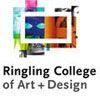
Ringling College of Art and Design (RCAD) was established in 1931 by circus baron, art collector, and real estate developer John Ringling. A member of the only global association to serve art and design education research (Cumulus), RCAD opened with just 75 students and 111 course offerings. Today, the school serves more than 1,600 students enrolled in 13 BA and BFA degree programs and nine minors. Graphic Design, Computer Animation, Film, Game Art, Illustration, and Virtual Reality Development are just a few options.
RCAD programs offer a rigorous curriculum, which combines studio and liberal arts, with client projects, substantive internships, and national competitions. The school’s BFA in Graphic Design prepares students to design “show-stopping solutions for print and interactive media,” says RCAD. Launched in 1980, the program allows students to collaborate with other artists such as copywriters, printers, photographers, illustrators, and developers to “make their ideas a reality.” Course highlights include Design & Typography, New Media Design, Contemporary Design Culture, Interactive Design, Drawing & 2D Design, Drawing & 3D Design, and Visual Persuasion. For Course GDES 491, students have three options: Design Center, an Internship, or Graphic Design Elective.
RCAD internships have led to many full-time employment opportunities. Graduates have been hired by companies such as Google, Facebook, Adult Swim, CBS Interactive, ESPN, Apple iTunes, Leo Burnett, Microsoft, Yahoo!, American Greetings, IGN Entertainment, Wieden + Kennedy, Walt Disney Company, Birchbox, Inc. and many others.

The Cooper Union for the Advancement of Science and Art (Cooper Union or CU) was founded in 1859 by inventor, industrialist and philanthropist Peter Cooper. The school offers programs in the areas of Art, Architecture and Engineering, and courses in the Humanities and Social Sciences. With nearly 900 students enrolled, the school’s art students account for 32% of the student population.
The School of Art at Cooper Union offers a flexible BFA in Art with a Specialization in Graphic Design. Students in the program may take elective studio classes and seminars, offered on a rotating basis, they may choose to focus their work in one or more areas of specialization, and they may enroll in advanced studio classes with the same course number multiple times. The school says that students are also “encouraged to follow an integrated approach by selecting from various areas while observing a prerequisite system designed to allow in-depth study in specific disciplines.” Other program highlights include internship and study abroad opportunities.

Minneapolis College of Art and Design (MCAD) was established in 1886. The school, which shares a block with the Minneapolis Institute of Art, serves more than 800 students from 45 states and 15 countries. Of these, 50% are enrolled in Design, 38% in Media Arts, 10% in Fine Arts, and the remaining 2% in MCAD's new Arts Entrepreneurship Department. More than 20 programs are available across several departments, including a BFA in Graphic Design, Post-Baccalaureate Certificates in Graphic Design and Interactive Design and Marketing, and an MFA in Visual Studies. A 30 credit hour MA in Graphic and Web Design (online) is also available.
Students in the 120 credit hour BFA program “will develop their own voice and produce original work, they will research, engage with, and create innovative concepts, content, and form, and learn to communicate ideas visually,” says the school. Students will also “refine their technical and conceptual design skills in preparation for a professional career in graphic design.”
The 60 credit hour MFA program allow students to pursue creative work in Graphic Design, Illustration, Interactive Media, Paper and Book Arts, Printmaking, and many others. Students will participate in opportunities “unique to MCAD’s MFA program” at art galleries, art centers, and nonprofits, designed to position students for success post-graduation. Most credits in the program are earned through one-on-one work with a faculty mentor who is an expert in the students chosen field. Optional internships are part of the program as well as a capstone thesis exhibition and paper in the final year.
Designed for motivated working adults, the 30 credit MA in Graphic and Web Design takes place entirely online. Courses cover typography, research, design principles, programming, ideation, web design, workflow management, and more. Students can start in fall or spring, and take one or two classes per semester.
Students in all programs also have the option to study abroad in places such as Italy, Japan, Ireland, England or Germany, or elsewhere in the U.S.

Established in 1890, Columbia College serves more than 7,300 students from nearly every state and more than 60 countries. The school has over 100 academic majors or programs across several schools and more than 20 departments. Schools include the School of Media Arts, the School of Fine and Performing Arts, and the School of Liberal Arts and Sciences. Programs for aspiring graphic designers are offered in the School of Fine and Performing Arts. Options include BA and BFA degrees in Graphic Design. A second BA in Graphic Design is also available for students who have already earned a bachelor’s degree.
BA students take fewer credit hours in the major and are encouraged to choose a minor or double major in another program such as Fine Arts, Photography, Advertising, or Motion Graphics. BA students choose a concentration in one discipline such as Web Design, Publication Design, or a general concentration.
The BFA requires more advanced courses in graphic design than the BA. Students in this degree track do not choose a concentration and take courses across disciplines including Web Design, Publication Design, and Visual Identity. A second BA in Graphic Design is available if a student has already earned a bachelor’s degree.
Students in both programs have the opportunity to intern at firms such as Leo Burnett—one of the largest advertising agencies in the world, and with clients like Procter & Gamble and Foote, Cone & Belding—a global advertising agency with clients around the world. Students have also interned at Pivot Design-an award-winning branding, marketing, and advertising agency, Pressley Johnson Design—one of the premiere design communications firms in the Midwest, and 50,000feet,Inc.—a firm that has worked with some of America’s top brands.

Founded in 1853, Washington University in St. Louis serves more than 14,500 students enrolled in more than 300 academic programs in a number of colleges and schools. The College of Art houses the Sam Fox School of Design & Visual Arts, which offers a BA in Design and BFA in Communication Design. The BA in Design is a 120 credit hour, collaborative program that allows students to experience design research and process through work in graphic design, interaction design, illustration, and fashion. Students can complete a broad design degree without a concentration, or choose a concentration in Communication or Fashion.
The BFA in Communication Design is a “collaborative program at the intersection of graphic design, illustration, and interaction design,” says the school. Students in this program can choose to design interfaces for mobile devices and the web, they can make pictures for games and motion graphics, or illustrate stories and create comics and design printed posters and books. Students can also choose to apply design skills to social problems in the community, including areas such as public health and urban education, or they may study the history of printed images, comics, and advertising through the Douglas B. Dowd Modern Graphic History Library.
The first year requires studio coursework in drawing, 2D and 3D design, digital design, and a weekly lecture course. Second year students explore disciplines across art and design, selecting from introductory courses in graphic design, typography, illustration, printmaking, painting, photography, sculpture, and fashion design.
Course highlights include Word & Image, Interaction Foundations, Interaction Design: User-Centered Applications, Illustration Concepts & Media/Visual Journalism, Content to Cover: The Design of Books, Design for Social Impact, and Art Practice. The program culminates in a Senior Capstone, which may be an illustrated book, zine, screen-based presentation, graphic novel/mini-comic, or digital experience. The final project is displayed in a public exhibition and reviewed by external design professionals.

Established in 1880, University of Southern California (USC) serves 47,500 students enrolled in more than 200 undergraduate programs, 300-plus graduate programs, and more than 150 minors. Program options for aspiring graphic designers are offered in the Roski School of Art and Design. First organized in 1883, the Roski School of Art and Design at USC is the oldest art school in Southern California.
“A supportive environment for experimentation in visual art of all media,” says the school, Roski “encourages interdisciplinary, progressive approaches to studio art, design, curatorial practice and critical studies.” The school offers a BFA and MFA degrees in Design and a Minor in Communication Design. The Design BFA requires 26 units of electives, which allows students to refine their focus. The program requires courses such as Art and Design Studio, Typography, Publication Design, Web Design, Drawing for Art and Design, Digital Tools in 3D Design, and 3D Design: Materials and Tools. A Professional Internship in the Arts, Special Projects in Design, and a Senior Thesis are also part of the program.
The Design MFA is a five-term program administered in collaboration with the Graduate School. A professional degree in the practice of design, the program highlights mentored relationships with design faculty, participation in regular seminars, and discussions and studio visits with leading visiting designers, writers and theorists from around the world. The Roski School's partnership and affiliation with the contemporary design community in Los Angeles, such as American Institute of Graphic Arts (AIGA), is also critical component of the MFA Design Program.
Students will complete an MFA Design Thesis and the opportunity to gain experience as a teaching assistant is available on a competitive basis.
The Communication Design Minor requires courses in design, visual literacy and digital imaging. It also includes optional courses in business, communication, public relations and marketing, “allowing students to translate their design foundation in ways that are directly relevant to their career paths.” The total number of units required for the minor is 24.

Founded in 1829, Rochester Institute of Technology (RIT) serves nearly 19,000 across eleven colleges and schools emphasizing career education and experiential learning. The school, which has global locations in China, Croatia, Dubai, and Kosovo, offers several programs for aspiring graphic designers. Programs include a BFA in Graphic Design and an MFA in Visual Communication Design.
Offered through the College of Art and Design, School of Design, the BFA integrates major courses, studio and free electives, and liberal arts, as well as aspects of business, professional practices, computer-based skills, collaborative projects, and workflow. Students can expect to take courses such as 2D and 3D Design, Time-Based Design, Interactive Media Design, Web and User Interface Design, Branding and Identity Design, Design Systems and Methodology, and Experiential Graphic Design. All students in the BFA program will complete a portfolio and Senior Capstone Project.
The MFA in Visual Communication Design (VCD) is a 60 credit hour program composed of courses in Communication Design, Interactive Design, and Motion and 3D Digital Design. In addition, students are required to take Design History Seminar, Design Theory and Methods Seminar, and Professional Practices. The school says, “seminars explore cross-disciplinary principles, theories and methods that can be used by designers. Through selected readings from current periodicals, critical writing, hands-on involvement, presentations and guest lectures, students will broaden their awareness of topics such as systems thinking, human factors, semiotic theory, and visual rhetoric.”
The MFA in VCD, which enrolls around 100 students, allows all eligible students to participate in an optional co-op program the summer between their first and second years. Some students may have the opportunity to participate during the fall and spring terms.
Graduates of the BFA and MFA programs at RIT will have career options such as Graphic Designer, Visual Designer, Art Director, Interactive Designer, UI/UX Designer, Digital Product Designer, Presentation Designer, Freelance Designer, Junior Designer, and many others.

Brigham Young University (BYU) was founded in 1875 by The Church of Jesus Christ of Latter-day Saints (LDS). Serving around 33,500 students from all 50 states and 105 countries, BYU offers more than 400 undergraduate majors and minors, master’s programs and doctoral programs. The school houses dozens of colleges, schools, and departments that offer programs from Accounting to Visual Communications.
The College of Fine Arts and Communications serves nearly 5,700 students enrolled in programs in the Department of Art, the School of Communications, the Department of Dance, the Department of Design, the School of Music, and the Department of Theater and Media Arts. Students in the College “undertake research projects, pursue internships, and participate in study abroad programs across the globe,” says the school. Communications is one of the College’s top six majors by graduation.
Options for aspiring graphic designers include BA and BFA degrees in Graphic Design, a BFA in Art with a Focus in New Genres or Printmaking, and Minors in Design or Advertising Design. Other areas of study include Interaction Design, Motion Design, Visual Development, and Branding.
Because of the popularity of the Graphic Design Program, enrollment is limited to just 40 students. Course highlights for the program include Branding, Design Thinking, Motion, Media Design, Bookbinding, Interaction Design, Letterpress Studio, and Studio Practices for Designers. Students in the program will complete a BFA Capstone Project and a required Professional Internship.
Student interns have the opportunity to apply their design skills in a real working environment, they will learn how to meet the needs of the client while preserving the integrity of the design principles they have learned in class, and interact with team members from all areas of expertise on a real-world project.

Founded in 1839, Boston University (BU) serves more than With over 35,000 students from more than 130 countries, enrolled in 17 schools and colleges, and more than 300 programs of study. With three campuses and over 10,000 faculty and staff, BU is Boston’s largest employer. Programs for aspiring graphic designers are offered in the College of Fine Arts. Options include BFA, MFA, and Certificate Programs in Graphic Design.
The BFA program “provides a sequenced studio approach, preparing students to thrive in a dynamic, creative professional environment,” says the school. The program begins with Foundations, which introduces “visual concepts in two and three dimensions, with an emphasis on drawing from observation.” In the Sophomore year, students specialize in graphic design coursework, with yearlong graphic design and typography studios that emphasize form and communication. Third year students participate in graphic design and typography studios that “address authorship, audience, and medium.” The program culminates in the thesis project and end of year exhibition, where students “articulate a personally driven design methodology through an installation of their work in the Boston University Art Galleries.”
The MFA in Graphic Design “provides a sequenced studio approach to advanced design thinking and problem solving for visual communication, preparing students to thrive in a dynamic professional environment.” Graphic Design Studios form the programs core and electives complement the studios, providing the opportunity to specialize in areas of interest. Elective courses currently include Information Design, Design for the Web, Interactive Design, Experience Design, Motion Graphics, Design Theory, History of Graphic Design, Editorial Design and Exhibition Design.
MFA students also benefit from lectures by nationally and internationally distinguished designers and direct contact with the industry. The program culminates in a master’s thesis, which is presented in an exhibition format at the Boston University Art Galleries.
An ideal step towards an MFA in Graphic Design, the Graphic Design Graduate Certificate Program is a one-year, full-time rigorous and intensive study in graphic design. The program includes core studio and typography requirements and allows students to choose elective courses based on their specific interests and career goals. Students in this program will complete 30 credit hours of study.

Founded as a night school by Russell Conwell in 1884, Temple University serves around 40,000 undergraduate, graduate and professional students enrolled in more than 500 academic programs across 17 schools and colleges. The largest university in Philadelphia, Temple has international campuses in Tokyo and Rome, and study abroad opportunities across six continents.
Tyler School of Art and Architecture at Temple University offers a BFA in Graphic & Interactive Design (GAID), a BFA in Graphic & Interactive Design with Entrepreneurial Studies, and an MFA in Graphic & Interactive Design. The BFA in GAID allows students to work closely with faculty who are practicing professionals with established international reputations in design for print and electronic media. Students will learn by working design projects for print and interactive media including logo and collateral design for corporate identities, packaging, promotional campaigns, books, periodicals, websites, web apps and animation. Advanced level courses are offered in a wide range of topics including corporate design, packaging, typography, publication design, promotion design, advertising, art direction, design authorship, illustration, digital narrative and interactive design.
The school says that the curriculum is enriched by visiting designers and illustrators and an exciting range of off-campus opportunities including an internship program for course credit, participation in national and international design competitions and exhibitions, community-oriented work for nonprofit organizations, tours of professional design studios, and portfolio reviews through professional design and advertising organizations. The program culminates in a final portfolio.
Graduates from the program land positions at design studios, in-house design departments and advertising and marketing agencies. Many alumni from the program go on to establish their own successful businesses as well.
The 126 credit hour BFA in GAID with Entrepreneurial Studies is offered in partnership with Fox School of Business at Temple and Tyler School of Art and Architecture. The program integrates the disciplines of art and entrepreneurship, preparing students with the requisite skills for entrepreneurship in their respective studio discipline and necessary preparation to pursue graduate studies in their studio discipline, in entrepreneurship, or in similar professions upon graduation.
Tyler’s MFA program in GAID is an intensive two-year immersion in the practice of design. The goal of the program, says the school “is to create a new generation of design entrepreneurs by providing them with real-world experience and the opportunity to be their own client.” Faculty identifies “specific MFA projects that have great entrepreneurial potential and guide students through the rigorous processes to make them real. Many of the MFA projects are now making their way into GAID’s design incubator, The Hatchery, a new initiative to promote entrepreneurship and transform student projects into marketable products.” Students work directly with the design incubator’s Director on marketing plans for graduate projects created at Tyler.
Graduate faculty “work closely with the MFA students in a program fueled by collaborative exploration. While faculty members guide students in defining and focusing on their unique projects, all students are engaged in supporting the development of each other’s work through regular group critiques and shared research.”
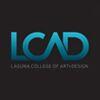
Established in 1961 as the Laguna Beach School of Art, Laguna College of Art and Design (LCAD) serves 670 students enrolled in seven graduate and undergraduate degree programs. Among them is a Graphic Design + Digital Media Program (GD+DM). With 110 students, Graphic Design is the third largest program at LCAD. Animation is the largest program, and Game Art is the second largest.
Graphic Design + Digital Media is a multidisciplinary program that covers print, advertising, web, 3D, motion, video, iPad development, package and action sport design. As a result, graduates of the program will have the skills needed to move seamlessly between print, web, motion and video. The major offers programs in Graphic Design, Graphic Design w/Illustration Emphasis and Graphic Design w/Action Sport Design Emphasis. Programs lead to a BFA.
LCAD graphic design graduates have gone on to work in a range of fields from advertising, branding, web design, and broadcast to action sport design, visual merchandising, publishing, packaging and print. Per the school, “their work has built the brands of ESPN, NIKE, Target, Google, Hurley, Fox Television, PacSun, MSNBC, Kawasaki, Surfer Magazine, the Syfy Channel and the Smithsonian among many others.”
More than 98% of LCAD’s recent Graphic Design graduates work in their chosen field, with most finding employment through LCAD prior to graduation.

Founded in 1898, Northeastern University (NU) serves more than 20,000 students enrolled in hundreds of programs across nine colleges and schools. The school also offers select advanced degrees at graduate campuses in Charlotte, North Carolina, Seattle, Silicon Valley, and Toronto. The College of Arts, Media and Design (CAMD) offers a range of programs for aspiring graphic Designers. Options include a BFA in Design with a Concentration in Graphic and Information Design, Interaction Design, or Experience Design, a BA in Art with a Concentration in Visual Studies, and a BA in Communication Studies and Graphic and Information Design.
Half majors in Graphic and Information Design, Interaction Design, and Visual Studies, and Minors in Graphic and Information Design, Experience Design, and Interaction Design are also available. Graduate offerings include MFA degrees in Information Design and Visualization, Studio Art, and Interdisciplinary Arts.
All CAMD students have the opportunity to study abroad in places such as Ireland, Venice, Rome, Berlin and Cuba.
